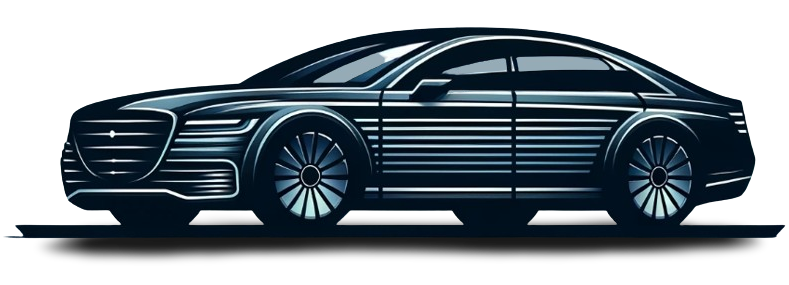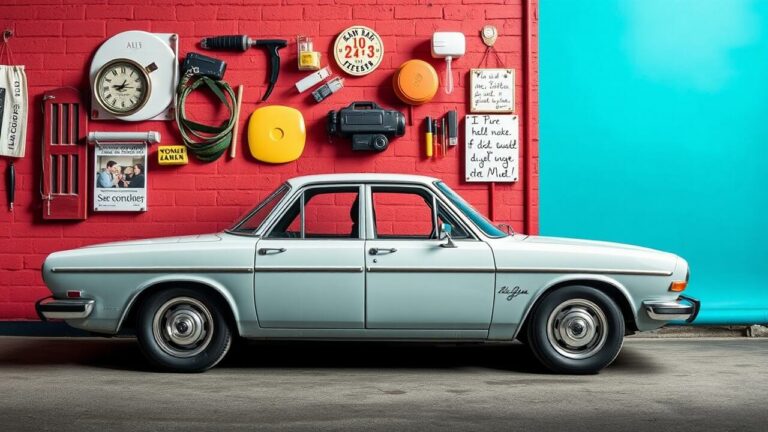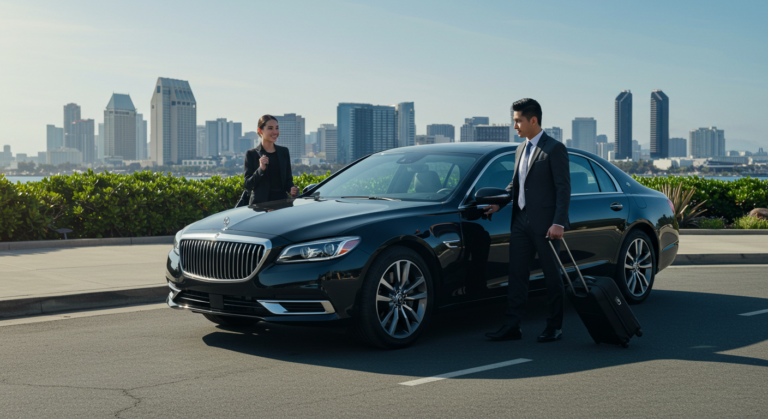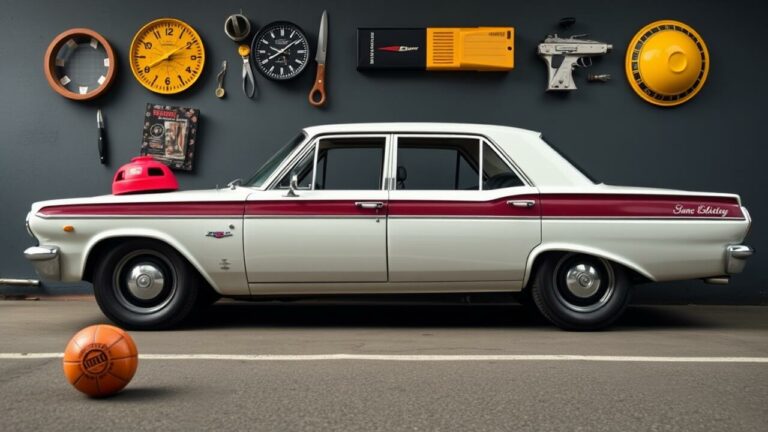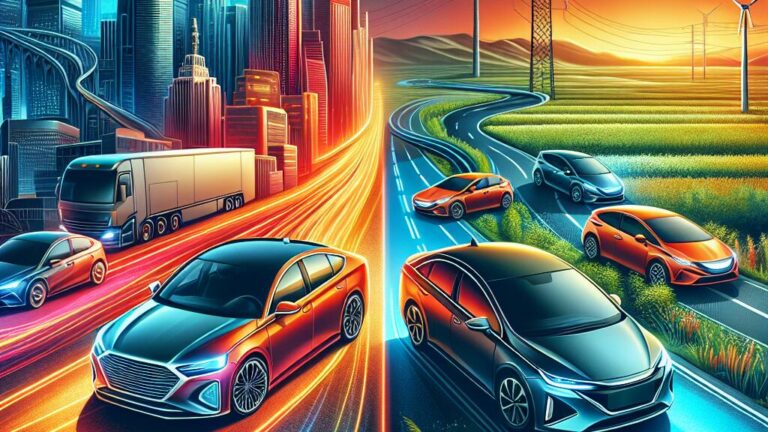Full Size vs Compact Car
Performance and Handling
Full-size cars—oh, they’re like the mighty titans of the road! With their robust engine options, these behemoths promise not just speed but a luxurious glide along highways that feels almost effortless. Picture this: cruising at high speeds with stability enveloping you like a warm blanket—perfect for those epic road trips where comfort reigns supreme. Now, flip the coin and enter the world of compact cars. These nimble little wonders are designed for agility; they dance through urban jungles and slip into tight parking spots as if winking at convenience itself. For city dwellers craving practicality, it’s an undeniable allure.
Now let’s talk handling! Full-size vehicles lean heavily on plushness—a suspension system crafted to suck up bumps and imperfections in the asphalt like a sponge soaking up water. Sure, this might mean sacrificing some edge when it comes to cornering finesse—but who can argue with that cloud-like ride? On the flip side, compact cars get right to business—they’re all about sharp turns and quick reactions! Their lighter frames and shorter wheelbases create an exhilarating connection between driver and machine—ideal for those who thrive on sporty thrills behind the wheel. Each category brings something unique to the table—a smorgasbord of choices catering beautifully to diverse tastes in driving styles!
Driving Dynamics of Full Size and Compact Cars
Full-size cars—those behemoths of the road—often boast sizeable engines and hefty chassis, crafting a driving experience that feels both stable and smooth, like gliding on glass. These massive machines tend to shine when it comes to straight-line speed, prioritizing comfort over nimbleness. Their substantial weight acts as a cushion against the jarring imperfections of the asphalt jungle, making them ideal for long hauls across vast stretches of highway. Yet this very heft can spell trouble; longer stopping distances lurk in their shadows while they struggle with quick maneuvers.
On the flip side are compact cars—nimble little creatures engineered for agility and fuel efficiency. Their lighter frames dance around corners with finesse, zipping through city streets where stops and turns are part of the daily grind. The steering? Oh, it’s an exhilarating delight! Immediate responses create a thrilling connection between driver and pavement—a visceral bond that some crave. Often packed with sporty features designed to elevate their dynamic prowess, these pint-sized powerhouses cater to those who seek an engaging ride filled with spirited excitement at every turn.
Safety Ratings
Safety ratings—oh, they’re like the pulse of a vehicle’s capacity to shield its passengers when fate steps in and an accident unfolds. A multitude of organizations, including the stalwarts like the National Highway Traffic Safety Administration (NHTSA) and the Insurance Institute for Highway Safety (IIHS), dive deep into rigorous testing protocols to dissect crashworthiness and unravel how well safety features hold up under pressure.
Full-size cars often bask in high praise, their robust mass coupled with structural fortifications creating a fortress-like aura that can significantly bolster protection during those chaotic multi-vehicle confrontations. It’s almost as if size plays a silent but potent role in this automotive ballet.
Now, let’s turn our gaze to compact cars—those nimble little wonders! Though they may be smaller and lighter, don’t underestimate them; they’re increasingly outfitted with cutting-edge safety technologies designed to counterbalance their diminutive stature. Think adaptive cruise control whispering sweet nothings about maintaining distance, lane-keeping assistance guiding your way like an invisible hand on your shoulder, or automatic emergency braking ready to spring into action at a moment’s notice—all becoming commonplace offerings across various models.
These advancements are shaking things up in the realm of safety ratings! The playing field is leveling as we consider individual assessments over mere category labels—a vital reminder that every vehicle has its own story worth examining beyond just whether it fits snugly into full-size or compact classifications.
Comparing Safety Features and Testing Results
Safety features emerge as a pivotal factor, setting full-size cars apart from their compact counterparts. Picture this: the sprawling expanse of full-size vehicles, brimming with cutting-edge safety tech—adaptive cruise control that adjusts to your whims, blind-spot monitoring keeping watch like an ever-vigilant guardian, and lane-keeping assist guiding you back on track. These innovations reflect an unwavering commitment to passenger protection, amplified by the robust frame and generous crumple zones that are hallmark traits of larger models.
Now pivoting to compact cars—here’s where things get interesting! While they may trade some grandeur for efficiency and cost-effectiveness, many still boast essential safety features that keep drivers protected without breaking the bank. Stability control? Check. Multiple airbags? You bet! Despite their smaller stature, numerous compact vehicles score impressively in safety ratings, showcasing how savvy engineering can pack power into a petite package.
And let’s not overlook crash testing—the battleground where both vehicle types face scrutiny from heavyweights like the National Highway Traffic Safety Administration (NHTSA) and the Insurance Institute for Highway Safety (IIHS). Full-size cars often shine here; their size and heft lend them an edge in collision scenarios. Yet don’t underestimate those nimble compacts! With innovative design tweaks allowing many small models to nab high marks in crashworthiness tests—some even clinching top honors—it’s clear manufacturers are pouring resources into fortifying these pint-sized rides. The result? A thrilling new era where smaller doesn’t mean sacrificing safety or reliability at all!
Technology and Infotainment
Oh, how the landscape of vehicle technology and infotainment systems has morphed into something extraordinary! It’s a veritable symphony of innovation that elevates the driving experience to dizzying heights. Full-size cars, those spacious chariots of comfort, often flaunt a dazzling array of advanced features—think expansive touchscreens that seem to beckon with their brilliance, audio systems so rich you’d swear you were in a concert hall, and connectivity options galore! These marvels typically come armed with top-notch navigation systems and an impressive buffet of smartphone integration choices. It’s like candy for tech-savvy consumers who crave sophistication while they cruise.
On the flip side, we have compact cars—a different breed altogether. Here lies a focus on simplicity and essential tech; these vehicles don’t overwhelm but rather serve up just what’s needed to keep things running smoothly. Sure, some models dabble in competitive infotainment offerings—but let’s be real: their features are usually more streamlined compared to their full-sized counterparts. Yet many compact rides shine through user-friendly interfaces that make sense without fuss. With standard perks like Bluetooth connectivity and responsive touchscreen displays, they’re tailored for folks who prize practicality over opulence—those modern-day minimalists ready to hit the road efficiently without drowning in technological excess!
Standard and Optional Features in Both Classes
Full-size and compact cars, oh, they dance in their own realms, each catering to the whims of different drivers. Picture this: full-size vehicles sprawling with a smorgasbord of standard goodies—think advanced navigation systems that almost seem sentient, premium audio setups that can make even your morning commute feel like an epic concert, and interiors so spacious you might wonder if you’ve accidentally stepped into a living room on wheels! These behemoths often boast additional driver-assistance technologies that whisper sweet nothings about safety while wrapping you in luxury options designed to elevate comfort to celestial heights.
Now flip the coin and behold the compact car—a savvy little contender focused on essentials rather than extravagance. Many models come equipped with straightforward yet practical features like touchscreen infotainment systems that respond at a mere flick of your finger, Bluetooth connectivity ready for seamless pairing, and smartphone integration ensuring you’re always plugged into your digital life—all crafted for a driving experience that’s as functional as it is budget-friendly.
When it comes to optional features? Oh boy! The divergence becomes even more apparent! In the realm of full-size cars, there’s an abundance—a veritable treasure trove—of high-end options just waiting for eager consumers. Adaptive cruise control gliding gracefully through traffic jams; advanced safety packages presenting layers upon layers of protection; customizable interior finishes inviting personalization down every last detail. On the flip side (again!), compact cars may offer fewer upgrade paths—but don’t underestimate them! Modern iterations are stepping up their game with desirable technology creeping in—enhanced sound systems that thump with clarity and safety packages making themselves known as available add-ons.
By weaving together threads of standardization and customization, both categories strive to strike that elusive balance between essential functionalities and enriched user experiences tailored precisely to what their buyers crave.
Market Trends
The automotive landscape is undergoing a fascinating transformation, marked by a tug-of-war between the allure of compact cars and the steadfast appeal of full-size models. On one side, compact cars are revving up their engines in popularity, fueled by their wallet-friendly prices and impressive fuel efficiency. As gas prices soar and cities become more congested, drivers are increasingly drawn to these nimble vehicles—perfect for darting through tight spaces and slipping into those tricky parking spots.
Yet, don’t count out full-size cars just yet! They’ve cultivated a devoted following that values generous interiors and robust performance. Families on road trips or daily commuters who crave comfort often gravitate toward these spacious beasts.
Sales figures reveal an intriguing dance of demand: compact cars are carving out an expanding niche in the market. In response, manufacturers are rolling up their sleeves to supercharge features and integrate cutting-edge tech into these smaller rides—making them irresistible to a broader spectrum of consumers. Nevertheless, full-size vehicles still command respect among buyers who prioritize luxury coupled with reliability.
As we look ahead, it’s clear that both segments will continue to evolve in tandem with shifting consumer preferences and market trends—a dynamic interplay that will shape sales strategies and production agendas across the auto industry like never before.
Consumer Preferences and Sales Data
In the ever-evolving landscape of the automotive market, a fascinating shift is unfolding—one that’s reshaping consumer preferences in dramatic fashion. A notable wave of buyers is increasingly leaning toward compact cars, lured by enticing factors like remarkable fuel efficiency, nimble urban maneuverability, and undeniable cost-effectiveness. These pint-sized vehicles strike a chord with younger generations and first-time car owners who crave economical options without skimping on essential features.
Meanwhile, full-size cars still hold their ground as steadfast favorites among families and individuals who treasure space, comfort, and an impressive array of technological wonders. It’s a classic tug-of-war between practicality and spacious indulgence.
Recent sales data paints an intriguing picture of these shifting tides over the past few years. While full-size models cling to a considerable slice of the market pie, compact cars are riding a steady upward surge in sales—thanks not only to rising environmental awareness but also those pesky gas prices creeping higher every day. In response to this burgeoning demand for smaller rides, automakers are diving headfirst into expanding their compact lineups. They’re packing these diminutive powerhouses with cutting-edge safety tech and infotainment systems designed specifically for today’s tech-savvy consumers.
This dynamic scenario signals intense competition within the automotive arena as manufacturers scramble to cater to an eclectic mix of customer needs in the bustling compact segment—a thrilling dance between innovation and tradition!
| Car Type | Average Price (USD) | Fuel Efficiency (MPG) | Market Share (%) |
|---|---|---|---|
| Compact Cars | 22,000 | 30-40 | 35% |
| Full-Size Cars | 35,000 | 20-30 | 30% |
| Mid-Size Cars | 28,000 | 25-35 | 25% |
| Electric Vehicles | 40,000 | 100+ | 10% |
Environmental Impact
The environmental footprint of vehicles has surged into the limelight, intertwining itself with global sustainability endeavors. Picture this: full-size cars—those hulking behemoths outfitted with robust engines—devour fuel at a staggering rate compared to their zippy compact cousins. This insatiable thirst for gas not only drains wallets but also cranks up greenhouse gas emissions, spiraling us deeper into ecological peril. On the flip side, compact cars strut onto the scene as champions of fuel efficiency, presenting themselves as greener alternatives. Their diminutive stature translates to less energy gobbled up during operation, dovetailing nicely with efforts aimed at shrinking carbon footprints.
But hold on; it’s not just about how much juice they guzzle! The materials used and the very processes behind vehicle manufacturing wield significant influence over environmental sustainability too. Compact vehicles often boast lighter materials that enhance their efficiency while simultaneously slashing resource consumption during production—a double whammy for Mother Earth! And let’s not forget about innovation: hybrid and electric technologies are reshaping the landscape within this segment like a whirlwind of progress. Sure, full-size vehicles are starting to dip their toes in these advanced waters too—but let’s face it, they’re lagging behind their nimble counterparts.
Both categories find themselves under pressure to embrace more sustainable practices; yet here we stand in a marketplace still marked by starkly contrasting environmental profiles—a curious dance between size and eco-friendliness unfolds before our eyes!
Emissions and Sustainability Considerations
Compact cars—those nimble little wonders—often churn out fewer emissions than their hulking full-size rivals, thanks to their petite engines and featherweight frames. This delightful quirk often morphs into stellar fuel efficiency, rendering them a darling choice for eco-minded consumers eager to shrink their carbon footprint. A growing number of manufacturers are diving headfirst into the realm of hybrids and electrics within the compact category, adding yet another layer to their green appeal. These technological strides echo a surging tide of eco-conscious driving alternatives sweeping through the automotive industry.
Now, on the flip side, we have full-size vehicles that boast ample space and robust power but typically falter when it comes to matching the environmental prowess of those compact champs. Yet don’t count them out just yet! Many larger models are now embracing cutting-edge engineering strategies aimed at lightening their ecological load. Innovations like start-stop systems and streamlined aerodynamics are gradually creeping into this arena, working tirelessly to boost fuel economy while slashing emissions. As this ever-evolving automotive landscape unfolds before us, consumers find themselves grappling with a tantalizing dilemma: weigh the allure of spacious comfort against the pressing environmental repercussions tied to their vehicle choices.
- Compact cars typically exhibit lower emissions due to smaller engines and lighter weight.
- Enhanced fuel efficiency in compact cars makes them attractive to eco-minded consumers.
- The trend toward hybrids and electrics in compact vehicles reflects a growing commitment to sustainability.
- Many full-size vehicles are incorporating new technologies to reduce emissions and increase fuel economy.
- Innovations such as start-stop systems contribute significantly to lowering the environmental impact of larger vehicles.
- Aerodynamic improvements in full-size models help to enhance fuel efficiency without compromising space.
- Consumers must balance the benefits of vehicle size and comfort against their environmental impact when making purchasing decisions.
Conclusion
When you dive into the realm of full-size versus compact cars, a whirlwind of differences awaits—think performance, safety, and technology. Each category flaunts its own unique charms crafted for distinct consumer tastes. Full-size vehicles? They’re all about that spacious embrace and plush comfort. On the flip side, compact cars are champions of efficiency and nimble maneuvering through tight spots.
But wait! As market dynamics shift like sand in an hourglass, these elements become pivotal in shaping what buyers ultimately choose. Toss in the latest trends and environmental concerns—like a splash of cold water—and the decision-making process grows even more intricate. Today’s savvy consumers are increasingly conscious of emissions and sustainability effects; it’s no longer just about getting from point A to B.
Navigating through the pros and cons of both full-size and compact options is vital for anyone looking to make smart choices amid this ever-evolving automotive landscape.
